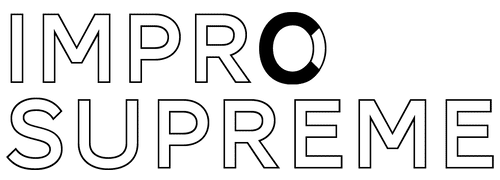Why read about acting and theatre if you’re not an actor or director?
Why read yet another book about it, if you’re already working in the business?
I’ll answer the second question first: you have to keep thinking about your art. Test your ideas. Formulate your own thoughts. Also, it’s the best way to find out whether someone has any real intellectual probity, should you consider working with them.
A book about acting and theatre, if it is any good, should reveal something to us about human life and behaviour. Both from the inside and the outside. It should give us insights as regular human beings, not just as ‘theatre people’.
It should make us want to take acting classes – again! Out of sheer love for life and curiosity about our shared humanity. Because acting is not just about making theatre shows.
It’s training to live.
And reading and thinking are part of that. As illustrated by the great Jean-Louis Barrault in the picture here above. I’m sure he would have appreciated Ira Seidenstein’s book Quantum Theatre: Slapstick to Shakespeare (2020).
At any rate, I naturally connected Barrault’s saying that “theatre is training to live” to Ira’s book. Reading the manuscript lifted my spirits again during lockdown in Paris. It reignited my passion for life in general and theatre in particular.
It’s an incredible little book that could work miracles in the hands of anyone who took it to heart. I’m proud to have written the foreword to it.
–––
The text here below was written in November 2020. It has been slightly edited and formatted for on-screen reading.
–––
Training to Live
I dearly wish all aspiring actors, performers, directors and teachers would read this book. Own it. Have it on their bookshelf, available when they need it.
For their own good – and for the common good; for their colleagues; for their audiences; for their students. In short: for all of us.
It’s so easy to forget that we’re all in it together. This life here. Which we sometimes think we know, from all the parts we play in it.
What’s the book about then? If I knew, I’d tell it to you straight.
I’d tell you what I think I know about the subject matter, if this something could be told directly in a meaningful way. I’m not so sure it can. However, I do know that it’s possible to give valuable hints and clues – and this book is absolutely packed with them.
It’s not just another book on acting. It’s a testament to life in theatre and theatre in life.
Neither of them separately and certainly not just one or the other, i.e. life or theatre, two unmanoeuvrable abstractions that nobody really cares about anyway. It’s always something else.
Life, Theatre and the Trap of Familiarity
I’ll say it again: this is about life in theatre and theatre in life. The stuff we all know so well. Familiarity is one of the inevitable traps and everywhere to be found.
It breeds habit.
We fall into thinking we know something, and of course we do know things, but what good does our knowledge do us? How do we know what we know? What can it do in the world? Is it of universal use – or strictly unique to ourselves?
Learning to know and how to know are, in my view, central to Ira Seidenstein’s work and his book Quantum Theatre: Slapstick to Shakespeare.
I used to be very familiar with this type of questions when I studied history of science at the university fifteen years ago. Handled with diligence, they could lead to glorious moments of intellectual enlightenment.
Often, however, followed by existential hangovers. I thought therefore I was. But what if I didn’t think for a second? What if I just felt?
Uh-oh, the abyss of existence opens beneath me. Back to pondering. Don’t let’s feel anything, it’s safer.
Or how about a glass of wine?
Ah, that feels better. Full-bodied.
Nice. Goodnight.
Feeling – From Theory to Practice
It was not long after finishing my official studies that I met Ira Seidenstein and very soon began to practise his exercises regularly.
His method was a perfect fit with its clarity and logic; a hands-on tool for practical knowledge – and with no directly related hangovers, just sore muscles and a bruised ego from time to time.
Today, I’m still very much concerned with the above-mentioned questions, only on a much more pragmatic and personal level. It’s healthier thinking, in the sense that it’s more complete. There is more feeling involved.
Are you ready for the joke?
In my studies I specialised in the history of psychology and the study of the emotions. One could say I had it coming. I wasn’t yet fully training to live. At any rate, I finally got what I’d asked for, but not from where I’d thought I’d get it.
And now? On the best of days, the wonder show of the world goes on with no end in sight. No futile hope for a final destination. No reckoning of a superior vantage point from where life or theatre can be known and comprehended once and for all.
In training to live there is no “once and for all”. It makes no sense.
Knowing or knowledge as end product is not what it’s all about. Which is not say that this isn’t of immense value. It is. I know it. And I love it, particularly what remains of it: records of knowledge. Ancient scrolls of wisdom. Books!
The distillation of human experience, paired with deep insight and organised so that those who come afterwards have a fair chance of benefiting from it. We’re back where we started.
What’s this book about? What can you get from it?
Let’s Get Some Things Straight
Like you’ve probably guessed, what you’ll get from this book is not straight academic knowledge – although Ira certainly will tell things to you straight.
Rather, you’ll get an opening, multiple invitations and a host of suggestions of how to move on from wherever you’re at, be it on or off stage. Now this doesn’t mean that you always have to move forward.
One particularly valuable aspect of Ira’s teaching is how he connects the dots and acknowledges those that came before. Study them, their ideas, their work – and start with the greatest!
It’s essential to remind ourselves that we’re all dots within bigger circles. And that each dot, if we look closely enough, is itself a circle.
Know thyself or whatever the Pythia says will sound dotty.
In a very down-to-earth sense, Ira could indeed be considered an oracle of theatre and clowning or acting and creativity. Remember though, that we mostly hear what we listen for. Listening – and reading – consciously is part of training to live.
Ira wrote this book; it comes from his more than four decades of experience. But it’s not about him. When you read the book it’s about you and how you take it in – not just the book, but the world it came from, the world it connects us all to.
The one physical world and the countless ones of poetry and imagination.
Old stories. And from them new stories. Our stories.
We’re all history before we know it.
Theatre Is Training to Live
In the words of Jean-Louis Barrault, theatre is entraînement à vivre, training to live. If we just look at those words together, it’s all there. What theatre is good for and how to go about it.
It’s not for life as an abstract principle or general phenomenon, but for living it – whatever your life is. And this training is not to be executed just as a means to end, but to be lived, to be fully experienced, in and of itself.
Here we can note that entraîner also means “to lead to” and “to carry away”. Lived training leads to a fully alive theatre which carries the audience away. It is material, real, ethereal, remembered, forgotten, gone. Not unlike our individual lives.
The gist of this foreword came to me this morning. While still in bed, I heard the familiar sounds of the garbage truck outside.
Clonk. Clatter. Crash.
Clonk.
Beep beep beep.
The world starting anew. No escape from these annoying sounds inaugurating the daily onslaught on my nervous system, mind and spirit.
All of a sudden it switched. I started really listening to the sounds, now hearing them within me, rather than resisting them as outside phenomena. Their source remained without, of course, but I felt and accepted them for what they were inside of me.
Pure effects detached from the workings that caused them into being, existing fully as themselves – and free for me to grasp in their brief passing.
The Miracle of Taking It All In
At peace now with the world just outside the window, my attention turned to the homely sounds inside. First the breathing warm body of the woman I will marry, then the motor of the refrigerator. Overtones and undertones.
Back to the breath, my own this time. This I could both listen to and feel the workings of. Then all the sounds at the same time.
Ah! The world!
Oh! To be alive!
Right here! Right now!
From annoyance and animus to consideration and love in a heartbeat.
A sort of quantum leap? Perhaps. At least human.
This experience was not a given. It was there for me to take. And if I was able to do so, to live that moment this morning, it was in large part thanks to the many, many hours I’ve spent working with the ideas in this book.
I’ve learned to put reactions and personal feelings aside, see them, see through them, and come back to them. All in a matter of seconds. Sometimes even in a split second. And on rare occasions simultaneously.
That to me is like a miracle. And if there is a goal to strive for, I’m convinced that’s it: to act from the living conscious human heart.
Get With It – Get Going!
So. I urge you to really dig into this book. Engage with it. Don’t believe it or disbelieve it. Read it. Think it. Feel it for yourself.
At the slightest provocation, doubtful thought or spark of inspiration, put the book down and try something. Express yourself.
Get up on the floor and dance or pick up a pen and write. Ask someone to watch or read. Expose yourself.
Risk opprobrium to reach equilibrium. Rinse and repeat. This is training to live. And you are living right now. In case you hadn’t noticed.
The world is never ending
Until it ends
You are reading this, so
It’s not over yet. Go on
The nothing new remains
To be seen anew
Rise and shine! Be
The sun that you are
Good morning.


